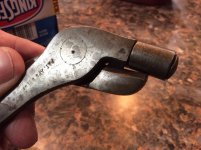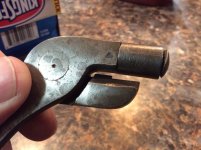Been trying for years to figure these out. Only markings is “patent applied for”. The round thing on the top jaw is actually a roller and the bottom jaw is wedged with a 1/8” flat area that presses against whatever is between the jaws. I appreciate any input.
Attachments
-
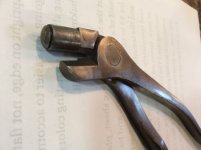 4B686FA3-7F5F-4EC1-A09F-24D7CCDB42D6.jpeg296.4 KB · Views: 108
4B686FA3-7F5F-4EC1-A09F-24D7CCDB42D6.jpeg296.4 KB · Views: 108 -
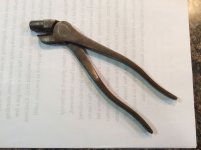 0B288CBE-890E-4195-9261-2A8A70336B5C.jpeg304.1 KB · Views: 89
0B288CBE-890E-4195-9261-2A8A70336B5C.jpeg304.1 KB · Views: 89 -
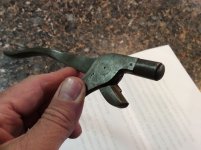 46CBA561-4657-4625-BF03-4D1C96358A0D.jpeg432.9 KB · Views: 95
46CBA561-4657-4625-BF03-4D1C96358A0D.jpeg432.9 KB · Views: 95 -
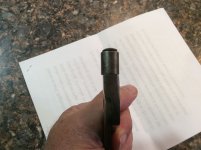 7D8D2CC9-9AED-4DF4-8A06-FF76FD0A8840.jpeg410.2 KB · Views: 75
7D8D2CC9-9AED-4DF4-8A06-FF76FD0A8840.jpeg410.2 KB · Views: 75 -
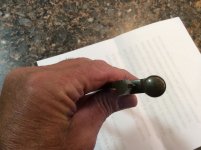 B7F8F303-5DC8-4BF9-B194-05217D09B2D8.jpeg421 KB · Views: 86
B7F8F303-5DC8-4BF9-B194-05217D09B2D8.jpeg421 KB · Views: 86




